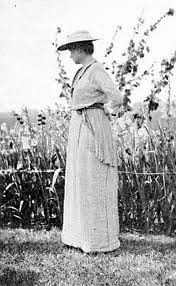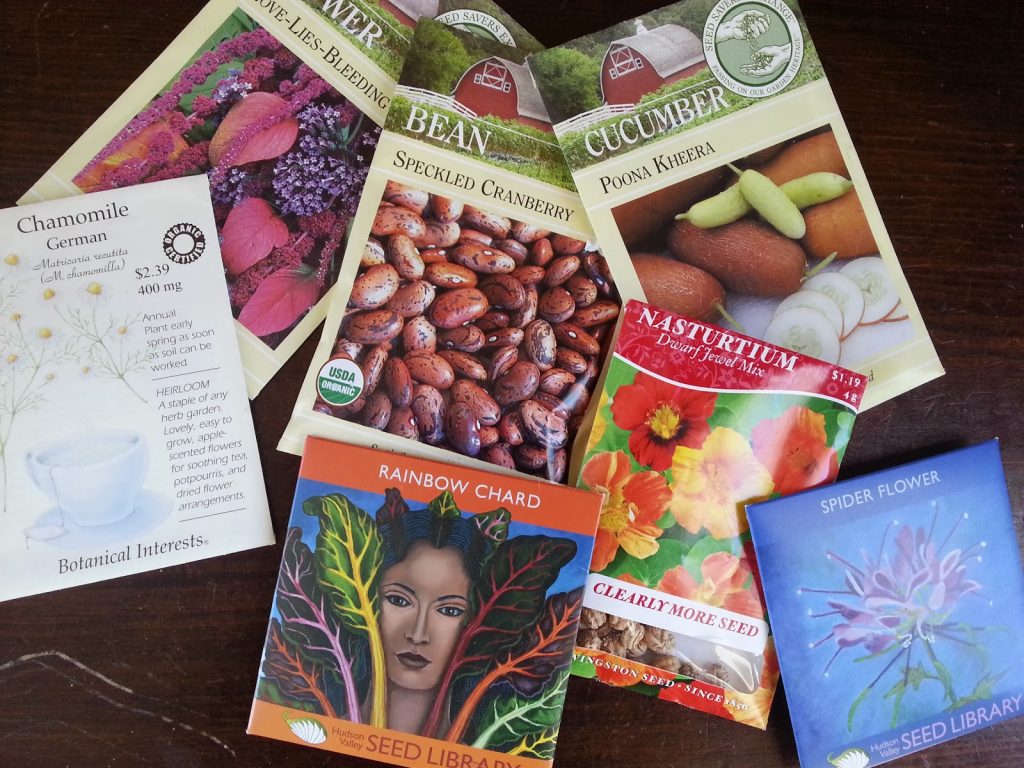Here is a wonderful little story that I originally found in our beloved Alfred C. Hottes book, Garden Facts & Fancies. It is entitled “A Summer in our Garden” by Gertrude Ellis Skinner. I read it awhile ago & I found it exceptionally charming. I did a little digging on Gertrude & found out that she was raised in Austin, MN (small world). This excerpt below was originally published in The Modern Gladiolus Grower for both Amateurs and Professionals in December, 1916, published by Madison Cooper, Calcium, New York. It is truly amazing that almost 100 years later, Gertrude gathered my feelings in her words. There is a line in the Indigo Girls song “Virginia Woolf”, that sums up my thoughts. “But if you need to know that you’ve weathered the storm of cruel mortality and well a hundred years later, I’m sitting here living proof.” So thanks Gertrude – a hundred years later, I’m sitting here on a January day with a smile on my face thinking of my beautiful garden.
“A Summer in Our Garden” by Gertrude Ellis Skinner

While the world watches the struggle for the ownership of some great railway system, the control of some big trust, the development of some enormous enterprise, we watch for the arrival of the seed catalogue to see which artist can get the most cabbages in a field, the most melons on a cart, or make the corn look most like the big trees of Yosemite. Don’t talk to us of the pleasure of bridge whist, it is not to be compared with the seed catalogue habit.
In the seed catalog we mark all the things we are going to buy. We mark all the new things. There is the Wonderberry, sweeter than the Blueberry, with the fragrance of the pineapple & the lusciousness of the strawberry! We mark the Himalaya-berry — which grows thirty feet, sometimes sixty feet in a single season. Why, one catalog told of a man who picked 3,833 1/2 pounds of berries from a single vine, besides what his children ate. Our Himalaya vine grew four inches the first season & died the first Winter. We were glad it did. We did not want such a monster running over our garden. We wanted to raise other things.
But we did not lose faith in our catalogs. We believe that they say just as the small boy believes he will see a lion eat a man at the circus, because the billboard picture him doing it.
If we ordered all the seeds we mark in the catalogue in January, we would require a township for a garden, a Rockefeller to finance it & an army to hoe it. We did not understand the purpose of a catalog for a long time. A catalog is a stimulus. It’s like an oyster cocktail before a dinner, a Scotch highball before the banquet, and the singing before a sermon. Salzer knows no one ever raised such a crop of cabbages as he pictures or the world would be drowned in sauerkraut. If the Himalaya-berry
bore as the catalogs say it does we should all be buried in jam. You horticulturists never expect to
raise such an apple as Lindsay describes; if you did, they would be more valuable than the golden apples of Hesperides.
But when we get a catalogue we just naturally dream that what we shall raise will not only be as good but will excel the pictures. Alas, of such stuff are dreams made! We could not do our gardening without catalogues, but they are not true to life as we find in our garden. We never got a catalogue that showed the striped bug on the cucumber, the slug on the rose bush, the louse on the aster, the cut worm on the phlox, the black bug on the syringe, the thousand and one pest, including the great American hen, the queen of the backyard, but the Goth and vandal of our garden.
But the best part of summer in our garden is the work we do in the winter. Then it is that our garden is most beautiful, for we work in the garden of imagination, where drouth does not blight, nor storms devastate, where the worm never cuts or the bugs destroy. No dog ever uproots in the garden of imagination, nor doth the hen scratch. This is the perfect garden. Our Goldenglow blossoms in all of it’s auriferous splendor, the Oriental Poppy is a barbaric blaze of glory, our Roses are as fair as the tints of Aurora, the Larkspur vies with the azure of heaven, the Gladioli are like a galaxy of butterflies and our Lilies like those which put Solomon in the shade. Every flower is in it’s proper place to make harmony complete. There is not a jarring note of color in our garden in the Winter time.
Then comes the Spring in our garden….”
For further info on Gertrude, check out these links.
Getrude Ellis Skinner bio
“A Summer in Our Garden”
Austin, MN Ellis Middle School
 |
A few of my faves.
